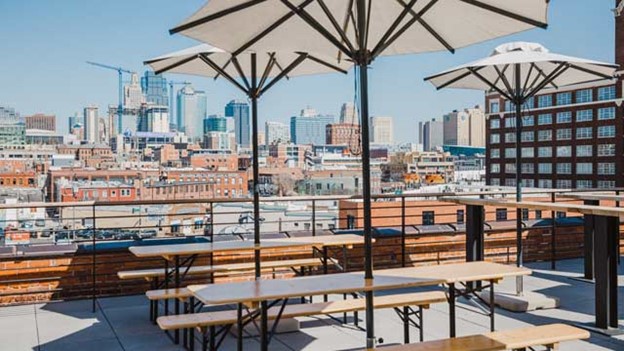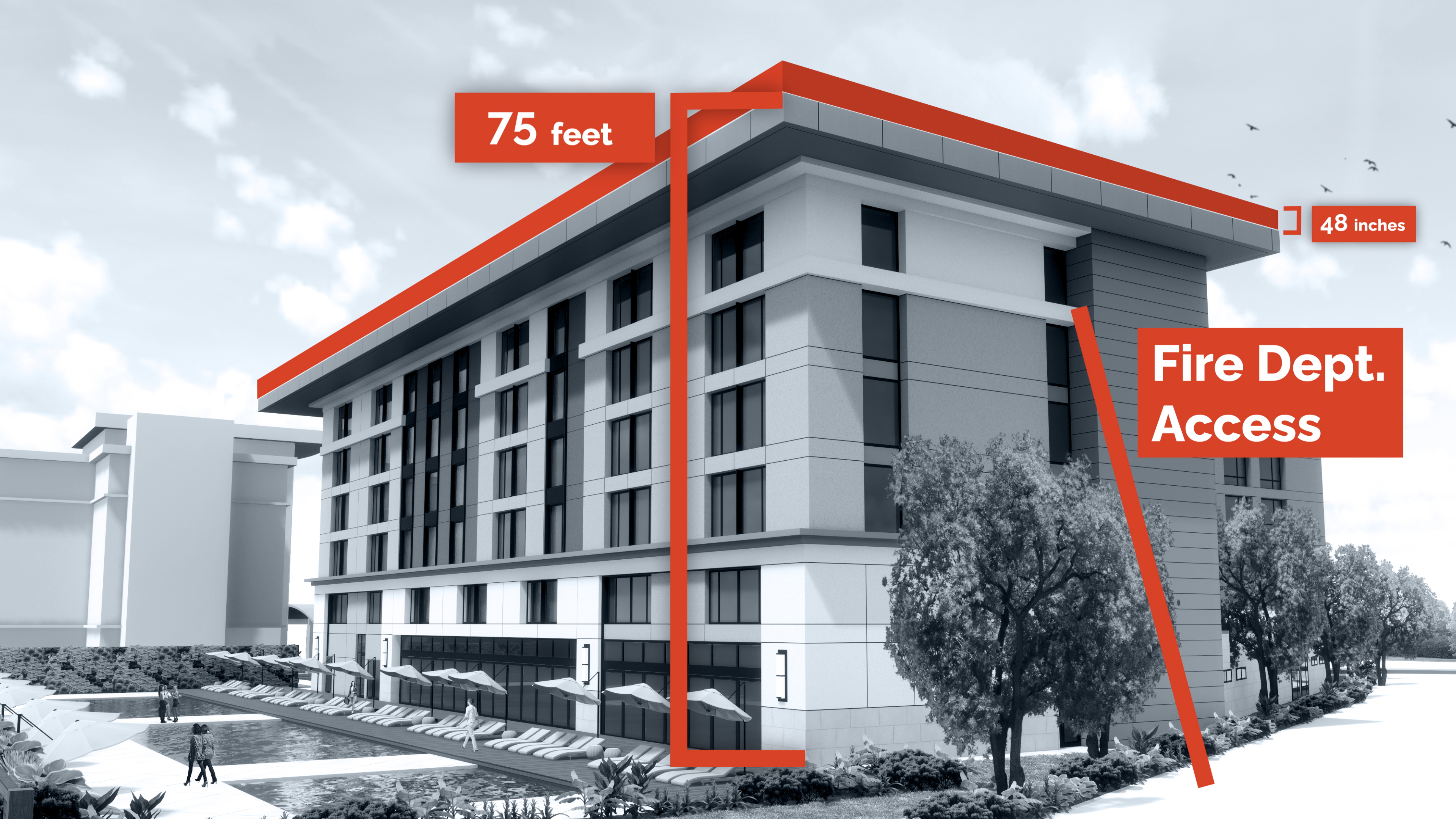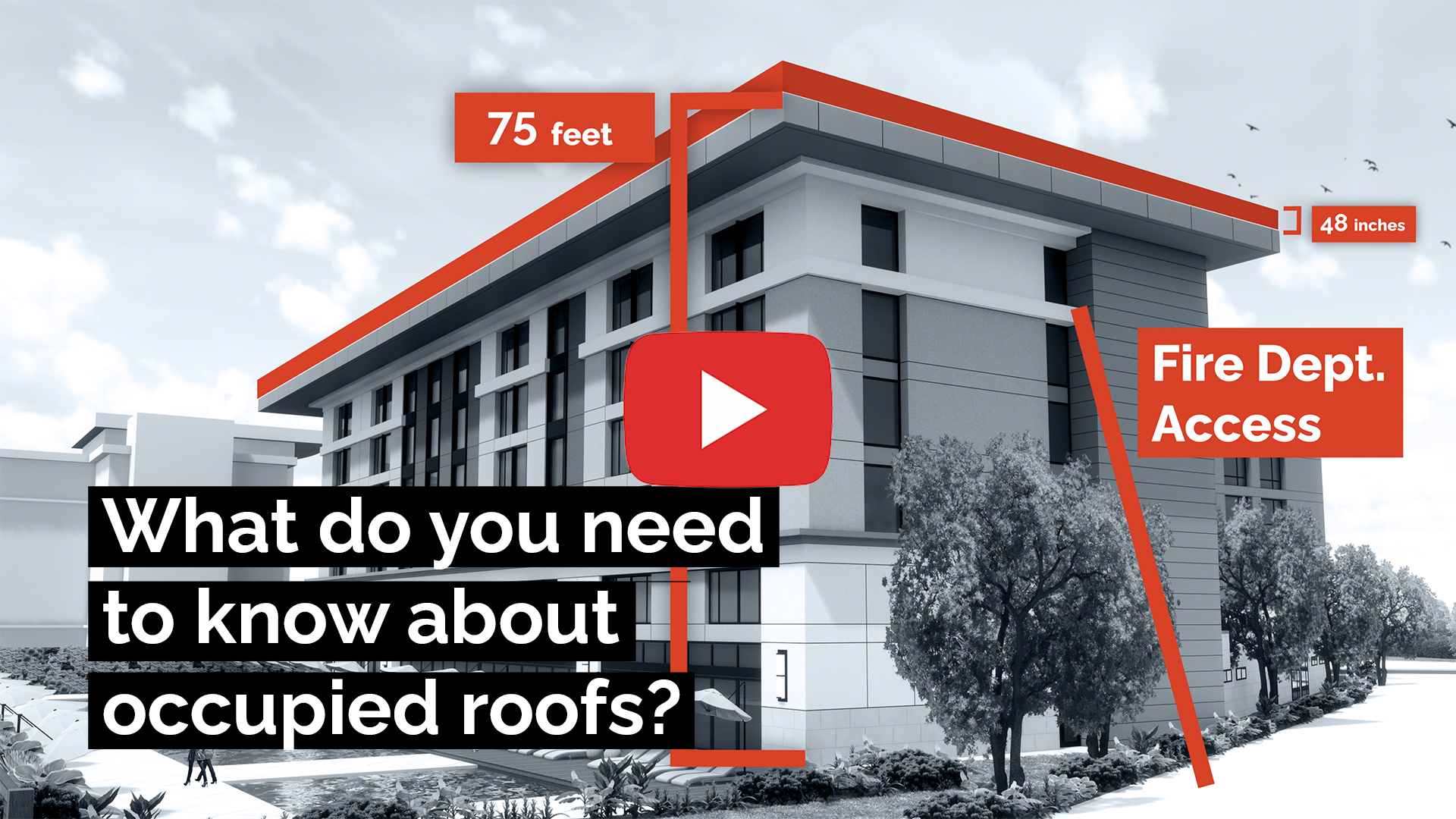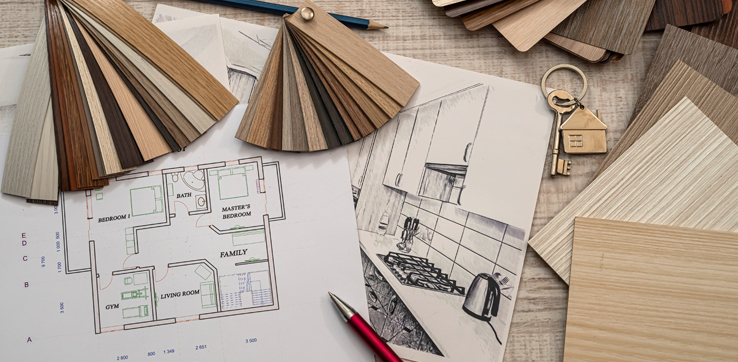More and more building owners are using open rooftops to create event or gathering spaces, which has triggered changes to the International Building Code (IBC) over the course of the past several years. The 2018 version of the IBC began to incorporate requirements for occupied roofs, which included the following:
- The area of the occupied roof did not need to be included in the building area provided the occupancy classification for the roof was permitted on the story below the roof.
- Any occupancy was allowed as long as the building was provided with an automatic sprinkler system and there was a notification system (fire alarm) on the roof.
- Any structures, such as a bar, tabletop or pergola were limited to 48 inches in height.

As the code continued to evolve the occupied roof language, the 2021 IBC continued to allow for occupied roofs to not be considered a story as long as a penthouse or other enclosed roof structure complied with the provisions of Section 1511, which specifically addresses rooftop structures. The 2021 IBC also further clarifies that an emergency voice/alarm communication system was required if the occupancy on the occupied roof is other than one that would be permitted on the upper floor of the building. This was an expansion of the code – it meant that the occupied roof needed more than just a fire alarm system, but rather a means to provide voice communication to occupants in an emergency.
Upcoming code changes
While the 2024 IBC has not yet been published, it was written and completed in late 2021. I have served on an International Code Council Code Development Committee, which hears changes to the IBC. Based on this experience, I follow code changes on a more detailed level. It is from this process, that I am sharing the language for what will be included in the 2024 IBC, when it is published.
Once in place, the 2024 IBC will require that an occupied roof will attribute to the height consideration of the building. Remember, under both the 2018 and 2021, the occupied roof was not part of the area of the building, nor did it contribute to the height of the building. Now, the 2024 IBC clarifies that, because the roof has occupants like any other story in the building, the roof must be included in determining the total height of the building. With this change, now a building that was not previously considered a high-rise, could now fall under the high-rise provisions of the code. As a quick reminder, the 2021 IBC currently defines a high-rise building as “a building with an occupied floor located more than 75 feet above the lowest level of fire department vehicle access.”
Let’s use an existing building as an example. If we have a building where the tallest floor level is at 63 feet, and now we add an occupied roof to that building, now that occupied roof becomes our point of measurement in terms of building height.

If that occupied roof is now more than 75 feet above the lowest level of fire department access, now the building is considered a high rise and will trigger additional life safety requirements:
- smokeproof enclosures for exit stairways
- a fire command center
- standby power
While both the 2018 and 2021 IBC limit the height of any enclosures over the occupied roof area to 48 inches, the 2024 IBC will allow for enclosures of the occupied roof to exceed the 48-inch limitation IF the occupied roof is now a high-rise building. Once the roof deck is more than the height of fire ladder access, there is no longer the need to limit the height of any enclosure on the occupied roof.
Learn more about these code changes from Eirene Knott, as she explains further in our latest Code Update video.




